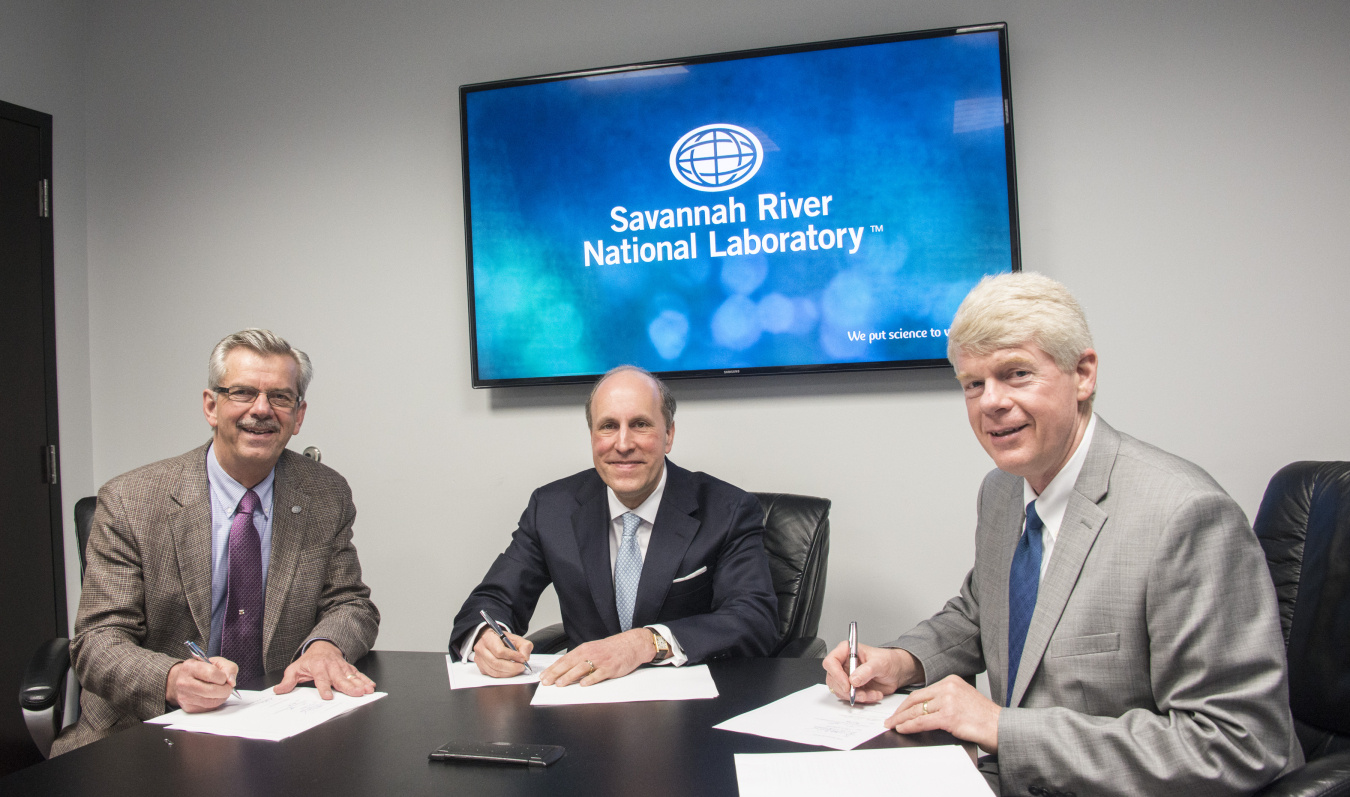New Agreement Expands Support for DOE Long-Term Stewardship
March 30, 2018Officials from the U.S. Department of Energy (DOE) signed a Memorandum of Understanding (MOU) formally establishing Savannah River National Laboratory (SRNL) as the lead national laboratory providing technical support to DOE’s management of remediated cleanup sites around the United States.
According to the agreement, the DOE Office of Legacy Management (LM) will gain formal access to SRNL technical expertise and assistance. Since the mid-1990s, the lab has lent targeted assistance to address critical technical issues for LM, which provides management and surveillance of more than 90 sites in the former nuclear weapons complex where environmental cleanup has been completed.
SRNL is the lead national laboratory supporting ongoing cleanup by the DOE Office of Environmental Management (EM) at former weapons sites and government-sponsored nuclear research facilities. The MOU designates the laboratory as lead for LM as well.
“Expanded access to DOE national laboratory expertise will accelerate LM’s ability to assess and deploy technology and expertise to sustainably manage the use of legacy land and assets,” said LM Director Carmelo Melendez. “We believe this collaboration will help LM reduce budget expenditures and improve our stakeholder confidence.”
Melendez signed the agreement along with DOE Under Secretary Paul Dabbar, EM Principal Deputy Assistant Secretary James Owendoff, Savannah River Operations Office Manager Michael Budney, and SRNL Director Dr. Terry A. Michalske.
“Given the Savannah River National Laboratory’s role and experience in supporting the EM clean-up mission, it is a natural fit to be the lead national lab and entry point to help LM assess science, technology, and its strategic needs,” Owendoff said.
LM’s mission is sustainable, post-closure management of legacy sites where active remediation is complete, but where there is a need to ensure that sites remain protective, sometimes for thousands of years. Responsibilities include effective and efficient long-term surveillance and maintenance, operation of cleanup systems for surface and groundwater, and the management of land and assets by emphasizing safety, reuse, and disposition.
EM’s mission is the safe cleanup and closure of 107 contaminated nuclear weapons manufacturing and testing sites across the United States, making it the largest environmental cleanup program in the world. To date, cleanup has been completed at 91 sites.
“The experience SRNL gains in supporting LM can also be applied to future EM efforts making this relationship beneficial to all,” Budney said.
SRNL is a multi-program national laboratory that puts science to work providing practical, cost-effective solutions for the nation’s environmental, nuclear security, energy, and manufacturing challenges. For more information about the lab, visit https://srnl.doe.gov.
“SRNL developed many of the environmental remediation technologies implemented at cleanup sites across the DOE complex,” Michalske said. “This deep understanding makes SRNL well suited to monitor legacy sites to ensure long-term success.”

(L-R) Dr. Terry A. Michalske, director of SRNL, DOE Under Secretary Paul Dabbar, and Michael Budney, manager of the Savannah River Operations Office signed a Memorandum of Understanding.

